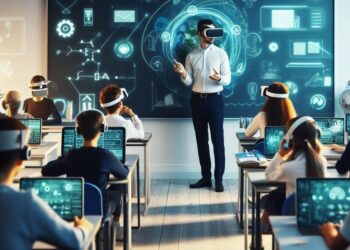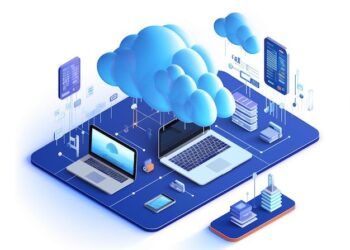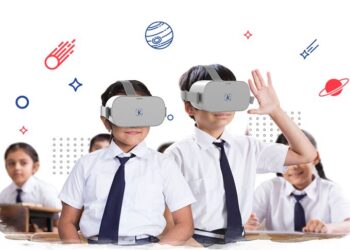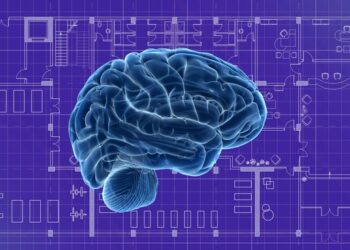In today’s fast-paced world, the ability to navigate the digital landscape has become an indispensable part of everyday life. From job applications to social interactions, understanding how to use technology effectively is no longer optional. This article explores why digital literacy is a fundamental skill set, its core components, benefits, challenges, and strategies for improvement. We’ll delve into real-world applications, future trends, and practical tips to help individuals and organizations thrive in the digital age.
Understanding Digital Literacy
Digital literacy refers to the skills required to find, evaluate, create, and communicate information using digital technologies. It goes beyond basic computer use; it encompasses critical thinking in online environments. In an era where information overload is common, knowing how to discern reliable sources from misinformation is crucial.
Historically, literacy meant reading and writing. Now, it includes digital tools like smartphones, computers, and software applications. According to experts, digital literacy empowers people to participate fully in society, economy, and culture. Without it, individuals risk being left behind in a technology-driven world.
The rise of the internet and social media has amplified the need for these skills. For instance, during global events like pandemics, remote work and online learning highlighted gaps in digital proficiency. Governments and educators are increasingly recognizing this, integrating digital education into curricula worldwide.
Why Digital Literacy Matters Today
The digital divide – the gap between those with access to technology and those without – underscores the urgency. But access alone isn’t enough; skills are key. In the job market, employers seek candidates who can handle digital tools efficiently. Roles in marketing, data analysis, and even traditional fields like healthcare now require tech-savvy professionals.
Economically, digitally literate individuals contribute more productively. Businesses that train employees in digital skills see higher efficiency and innovation. On a personal level, it enhances safety online, protecting against scams and cyber threats.
Socially, digital literacy fosters informed citizenship. Voters can fact-check news, and communities can organize online for causes. In education, students with strong digital skills perform better in research and collaboration.
Core Components of Digital Literacy
To build a strong foundation, let’s break down the essential elements:
A. Information Literacy: This involves searching for and evaluating online information. Users must identify credible sources, such as academic journals or verified news outlets, while avoiding fake news.
B. Media Literacy: Understanding how media is created and consumed. It includes recognizing biases in content and the impact of algorithms on what we see.
C. Technical Proficiency: Basic skills like using operating systems, software, and hardware. This ranges from typing efficiently to troubleshooting common issues.
D. Communication Skills: Effectively sharing ideas online, whether through email, social media, or video calls. It emphasizes netiquette and clear digital expression.
E. Privacy and Security Awareness: Knowing how to protect personal data, use strong passwords, and recognize phishing attempts.
F. Digital Creation: Producing content like blogs, videos, or graphics using tools such as Canva or Adobe Suite.
G. Critical Thinking: Analyzing digital content for accuracy and relevance, questioning sources and motives.
H. Ethical Use: Understanding copyright laws, plagiarism, and responsible online behavior.
I. Adaptability: Keeping up with evolving technologies, from AI to virtual reality.
J. Collaboration: Working with others remotely using platforms like Google Workspace or Microsoft Teams.
These components interconnect, forming a holistic skill set.

Benefits of Being Digitally Literate
Investing in digital literacy yields numerous advantages. Professionally, it opens doors to better jobs and promotions. A study by a leading tech institute found that digitally skilled workers earn up to 20% more than their peers.
Personally, it enriches life through access to online resources, from e-books to virtual museums. Health benefits include using apps for fitness tracking or telemedicine.
For society, widespread digital literacy reduces inequality. It enables marginalized groups to access education and services online. Environmentally, it promotes paperless practices, cutting waste.
In business, companies with digitally literate teams innovate faster. They can leverage data analytics for better decisions and reach global markets via e-commerce.
Challenges in Achieving Digital Literacy
Despite its importance, barriers exist. Access to devices and internet is uneven, especially in rural or low-income areas. Affordability of training programs is another issue.
Age gaps play a role; older adults may feel intimidated by new tech. Cultural differences can affect adoption rates. Misinformation spreads easily, complicating learning.
Educational systems often lag, with curricula not updated for digital needs. Over-reliance on tech can lead to screen fatigue or addiction.
Addressing these requires policy changes, like subsidies for devices and free online courses.

Strategies to Improve Digital Literacy
Enhancing skills starts with self-assessment. Identify strengths and weaknesses through online quizzes.
A. Formal Education: Enroll in courses at community colleges or platforms like Coursera.
B. Online Resources: Use free sites like Khan Academy for tutorials.
C. Practice Daily: Incorporate tech into routines, like using apps for budgeting.
D. Mentorship: Pair with tech-savvy friends or join clubs.
E. Stay Updated: Follow tech news via podcasts or blogs.
F. Hands-On Projects: Build a website or edit videos to apply skills.
G. Community Programs: Participate in workshops at libraries.
H. Parental Guidance: For kids, parents should model good habits.
I. Workplace Training: Employers can offer seminars.
J. Government Initiatives: Support public campaigns for digital inclusion.
Consistency is key; regular practice builds confidence.
Real-World Applications
In healthcare, digital literacy allows patients to use portals for records and appointments. During crises, it enables tracking updates via apps.
In finance, understanding online banking prevents fraud. Entrepreneurs use digital marketing to grow businesses.
Education has transformed with e-learning platforms. Students research globally, collaborating across borders.
In entertainment, streaming services require navigation skills. Gaming teaches problem-solving digitally.
Future Trends in Digital Literacy
Emerging technologies like AI and blockchain will demand new skills. AI literacy involves understanding machine learning basics.
Virtual and augmented reality will change education and work. Metaverse platforms require navigation expertise.
Cybersecurity will be paramount as threats evolve. Quantum computing may introduce complex concepts.
Sustainability in digital use, like energy-efficient tech, will gain focus.
Preparing now ensures readiness for these shifts.
Case Studies
Consider a small business owner who learned SEO to boost online visibility, increasing sales by 50%. Or a student who used digital tools for a project, earning top grades.
In developing countries, programs like India’s Digital India have empowered millions with skills, improving livelihoods.
Overcoming Common Myths
Myth: Digital literacy is only for young people. Fact: Anyone can learn at any age.
Myth: It’s just about social media. Fact: It covers broad life aspects.
Myth: Tech replaces human skills. Fact: It enhances them.
Dispelling these encourages wider adoption.
Integrating Digital Literacy in Daily Life
Start small: Organize files digitally, use calendars apps. For families, set screen time rules.
In schools, integrate coding from early grades. Businesses should assess employee skills regularly.
The Role of Governments and Organizations
Policies like broadband expansion are vital. NGOs offer training in underserved areas.
Tech companies provide free tools and education.
Measuring Digital Literacy
Use frameworks like the European Commission’s DigComp to evaluate levels.
Self-tests and certifications validate progress.
Potential Risks of Ignoring Digital Literacy
Without it, job loss risks rise. Social isolation increases. Vulnerability to scams grows.
Economies suffer from unskilled workforces.
Conclusion
Digital literacy is essential for success in modern society. By mastering these skills, individuals unlock opportunities and navigate challenges effectively. Commit to lifelong learning in this domain.
This comprehensive guide aims to equip readers with knowledge and motivation. Whether you’re a beginner or advanced user, there’s always more to explore.











